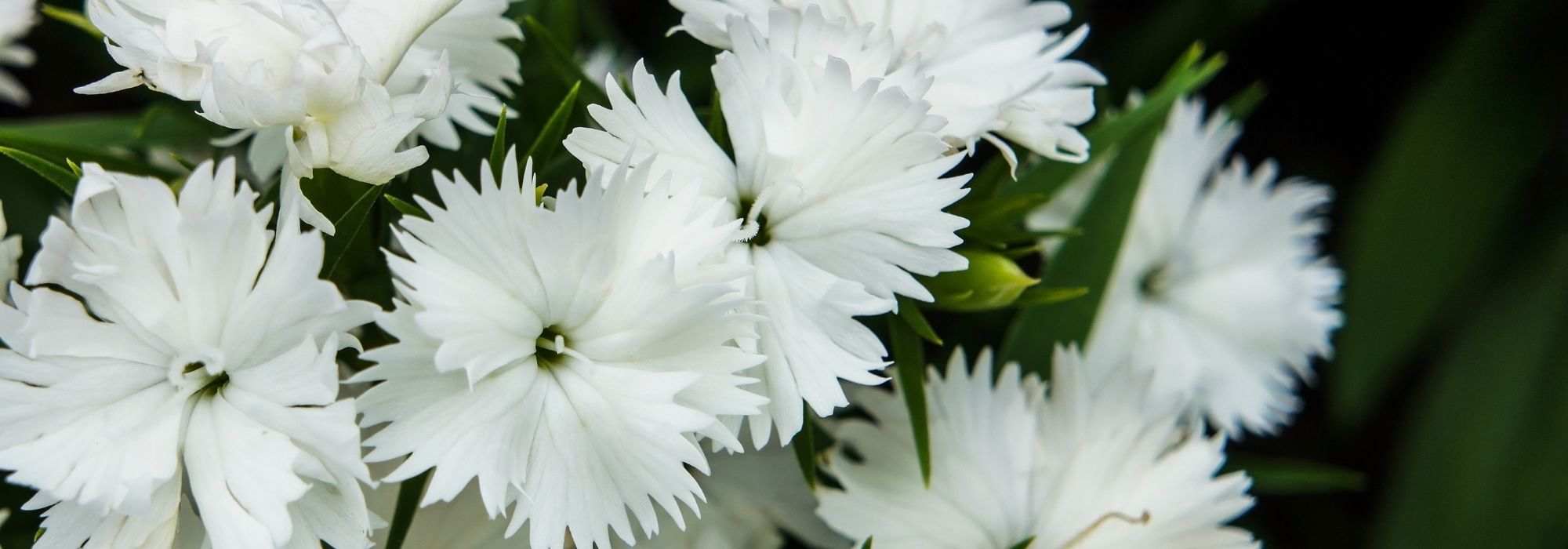
The 5 most beautiful white carnations
to plant in the garden
Contents
Easy to grow and hardy, Carnation reminds us of our grandmothers’ gardens. Often highly fragrant, it offers an abundant flowering from April to September depending on the varieties, sometimes even until the frosts. These flowers with a bucolic air come in various colours: white, pink, red, yellow, and also multicoloured. Thriving both in borders and in pots, in rockeries as well as on slopes or walls, these perennial or annual plants brighten up sunny gardens and terraces. White Carnations are less common than pink ones, but they are just as stunning and hold a special meaning in bouquets: they symbolise fidelity, passion, and purity! Discover our selection of the five most beautiful white Carnations.
Dianthus arenarius: a light and feathery flowering
Excellent groundcover for dry terrain, the Dianthus arenarius produces from July to September a profusion of single flowers with laciniate petals! This very elegant flowering creates a beautiful light effect. This species, also known as Sand Carnation, develops into a dense, evergreen cushion. Preferring well-drained, stony soils and very sunny locations, it is essential to lighten the soil with sand and gravel if the soil tends to retain water. This Carnation finds its place in rockeries or to dress a paving. You can also add a light touch to a low wall by placing Dianthus arenarius on top, alongside the Globe Flower in various shades of blue, the very resilient Houseleeks, the Spanish Lawn ‘Düsseldorfer Stolz’, and a cushion of Aubrieta.
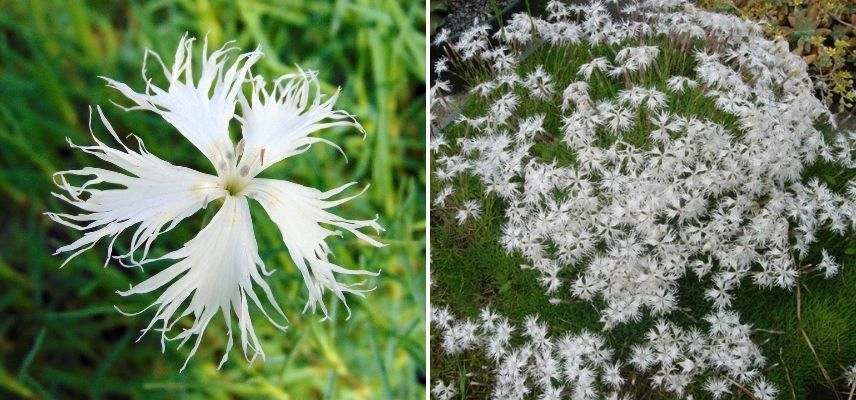
Dianthus arenarius (photo from right Wikipedia)
Read also
Drying carnationsDianthus deltoides ‘Albiflorus’: a highly floriferous groundcover
Pinks are well known for their ability to create beautiful colourful carpets. The Dianthus deltoides ‘Albiflorus’ is a prime example. It spreads harmoniously in a small cushion about thirty centimetres wide and does not exceed 15 centimetres in height. Just like the sand pink, this Dianthus bears simple, solitary white flowers with five petals from May to July. It is also known as delta pink due to its triangular petals. Another advantage is the pleasant fragrance emitted by its small flowers of 1 cm. To prolong its lifespan and prevent it from becoming bare, lightly trim it after flowering, then more severely at the end of winter. This semi-evergreen delta pink ‘Albiflorus’ beautifully carpets rockeries, slopes, and sunny walls. At the edge of a flowerbed, you can pair it with perennials such as Peonies, Lychnis coronaria ‘Atrosanguinea’, large colourful Snapdragons (Antirrhinum majus), and roses for flowerbeds.
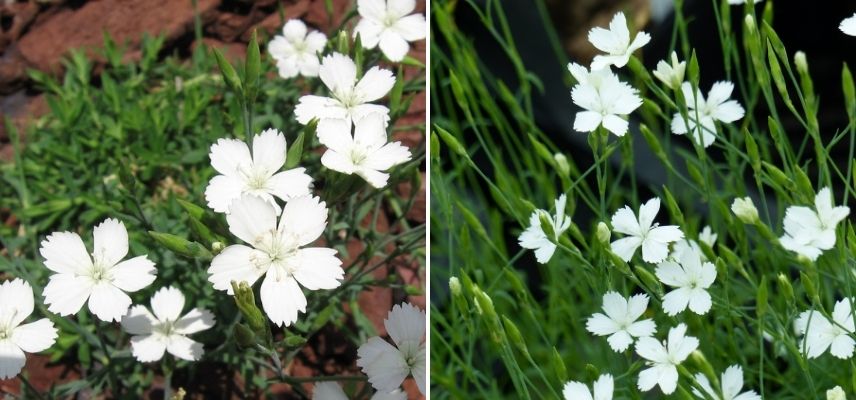
Dianthus deltoides ‘Albiflorus’ (photo from left Wikipedia)
Discover other Dianthus - Pinks
View all →Available in 0 sizes
Available in 2 sizes
Available in 2 sizes
Available in 2 sizes
Available in 1 sizes
Available in 2 sizes
Available in 2 sizes
Available in 1 sizes
Available in 2 sizes
Available in 1 sizes
Dianthus plumarius ‘Haytor White’: a frilled flowering
The Dianthus plumarius ‘Haytor White’ stands out with magnificent large double flowers, resembling fluffy pom-poms! Indeed, the flowers are perfectly round, made up of a meticulous assembly of numerous highly fringed petals. The intensely fragrant flowering of this Sweet William is also very long-lasting: from May to July, followed by a resurgence of flowers in September. Reaching 30 cm in all directions, it is perfect for pot planting to beautify and scent terraces and balconies. Moreover, this cultivar is excellent for floral displays, to which its pure white adds a touch of freshness. In a cottage garden, pair the bluish tuft of Dianthus plumarius ‘Haytor White’ with Sages, Astrantia, Centaurea montana ‘Violetta’, Delphinium ‘Highlander Flamenco’, and Eryngium.
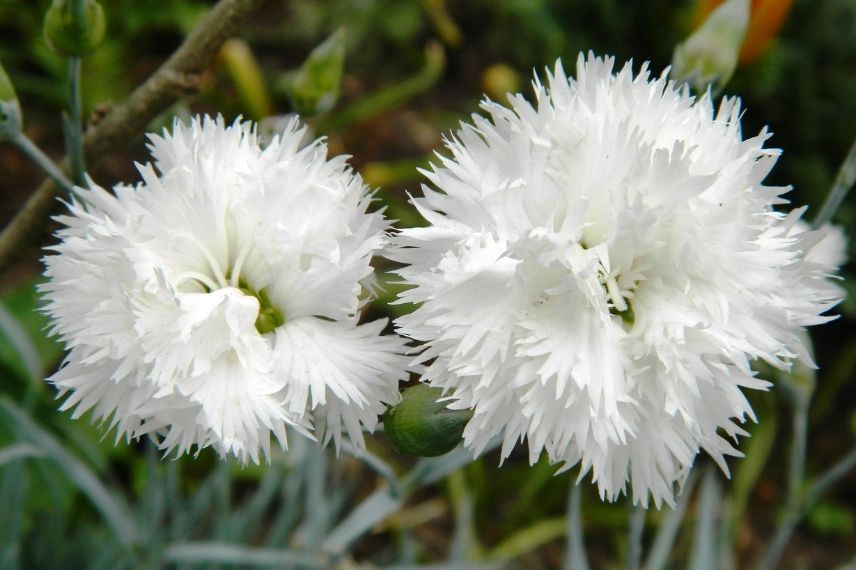
Dianthus plumarius ‘Haytor White’
Read also
Dianthus: 6 ideas to pair in the gardenDianthus plumarius ‘Scent First Coconut Sundae’: ideal for containers
Very fresh, Dianthus plumarius ‘Scent First Coconut Sundae’ produces lovely double and bicoloured flowers measuring 4 cm in diameter. This contrasting flowering, white at the centre with a purple heart, sits atop a cushion of linear, evergreen leaves in a beautiful grey-green. This recent cultivar offers its delicate fragrance from May to August. It is valued for its compact and well-rounded habit, with short, sturdy flower stems. Reaching around thirty centimetres in height, it is perfectly suited for pot, window box, and trough cultivation. This Sweet William is part of the Scent First® series, which also includes Dianthus plumarius ‘Scent First Sugar Plum’ and ‘Scent First Raspberry Sundae’. The elegant and numerous flowers of this English carnation are highlighted in a scene of several flowering pots, alongside Phlox, grasses such as Pennisetum alopecuroides ‘Little Bunny’, Gaura lindheimeri ‘Blaze’, Gentian ‘Little Pinkie’, and Veronica spicata ‘Bubblegum Candles’.
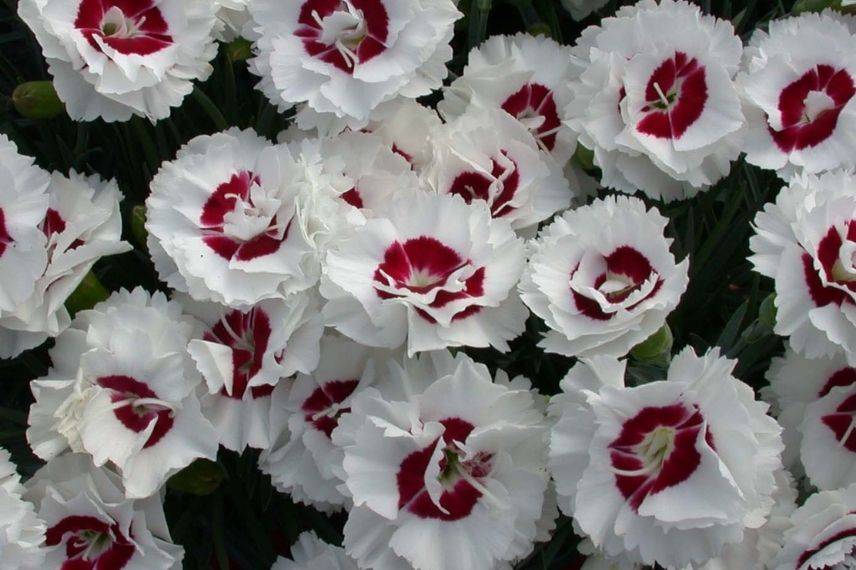
Dianthus plumarius ‘Coconut Sundae’
Dianthus plumarius ‘Scent First Memories’: an astonishing fragrance
The Dianthus plumarius ‘Scent First Memories’ is a more modern version of the well-known and ancient Carnation ‘Mrs Sinkins’. Awarded numerous times, it is highly floriferous and boasts a profusion of flowers from May to August. Furthermore, this very recent English variety from 2012 is particularly fragrant. Its pure white double flowers with delicately frilled edges emit a powerful spicy scent, attracting butterflies and bees. Its pruinose bluish-green foliage remains decorative throughout winter, forming a homogeneous clump of 30 cm in all directions. Also noteworthy is the Dianthus plumarius ‘Devon Dove’, very similar to the ‘Scent First Memories’ variety, equally hardy, but slightly taller with cream-white flowers. In a sunny border, pair the elegant ‘Scent First Memories’ Carnation with perennials such as Echinacea ‘Butterfly Kisses’, Bleeding Heart, Digiplexis ‘Illumination Raspberry’, and Dahlias.
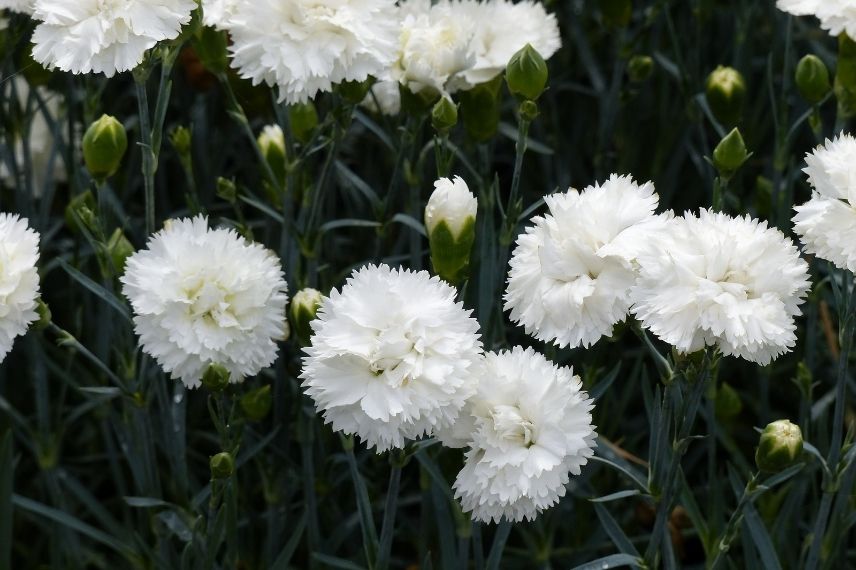
Dianthus plumarius ‘Scent First Memories’
For further reading
Discover our range of Pinks on our site.
To learn everything about Dianthus, check out our sheet Pink: planting, maintenance, and sowing tips.
- Subscribe!
- Contents
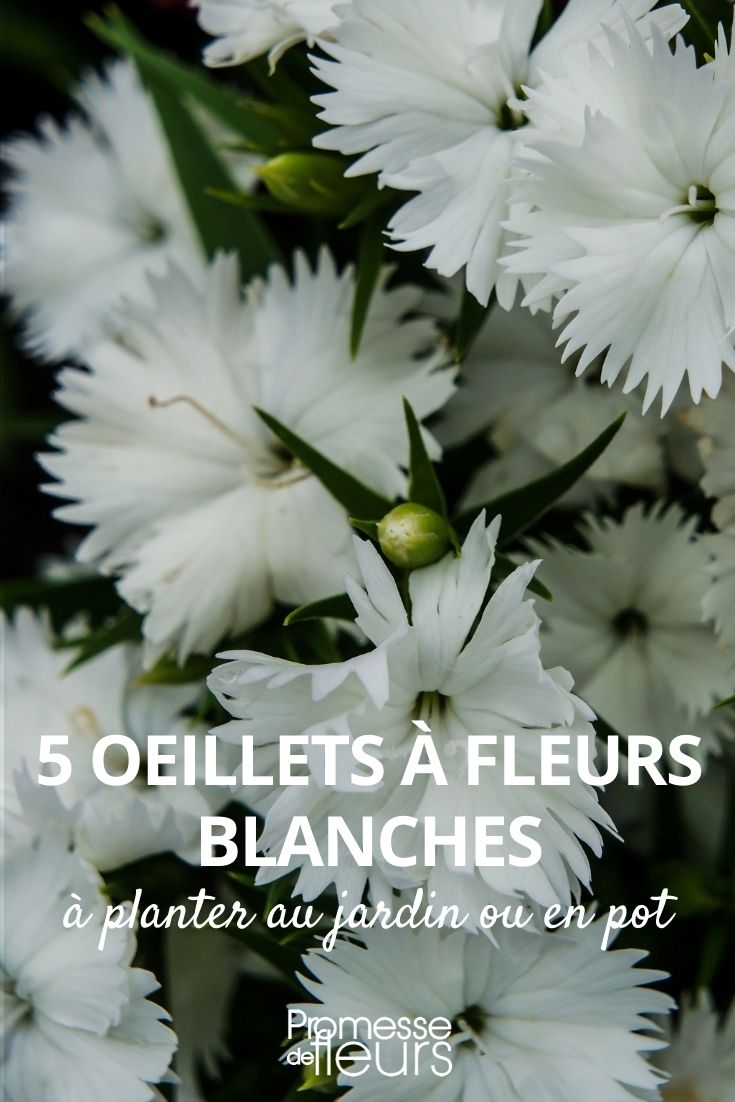































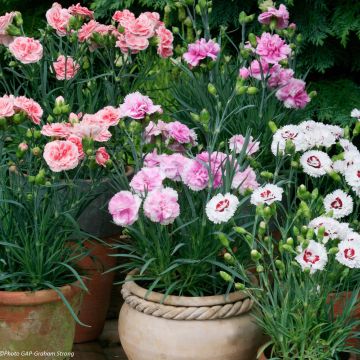
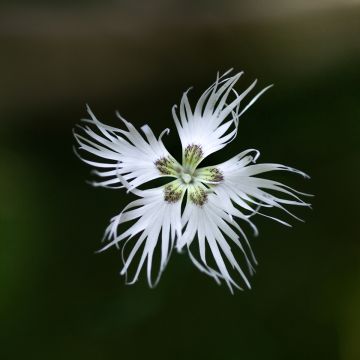
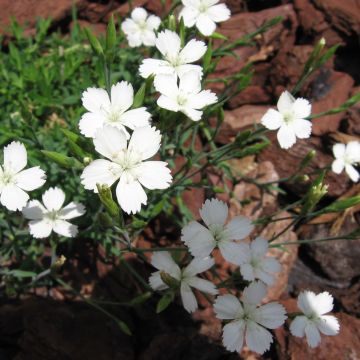
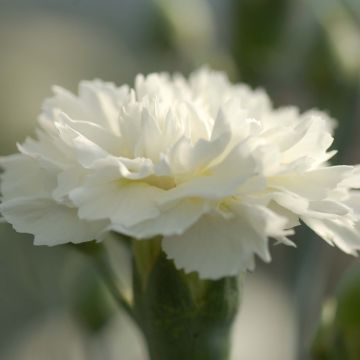
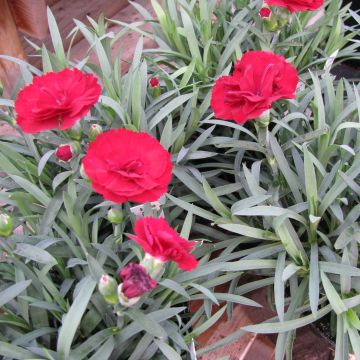
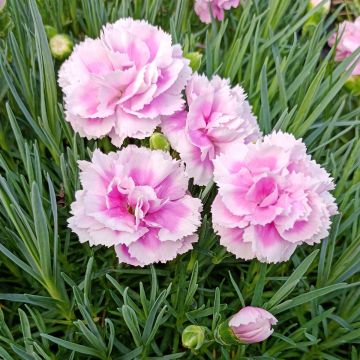
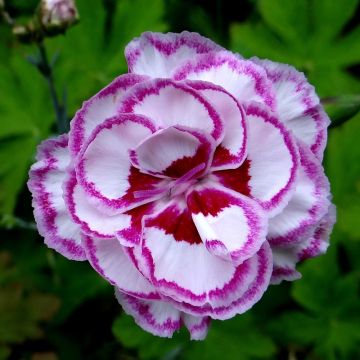
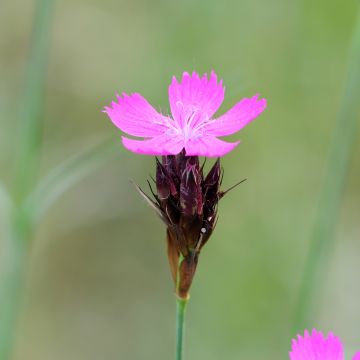
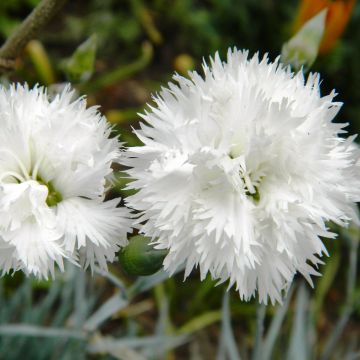
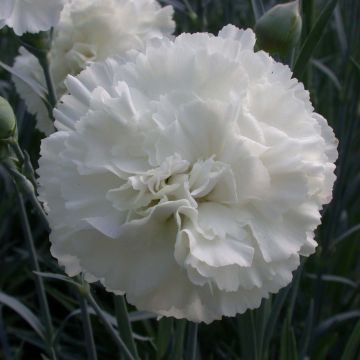
Comments